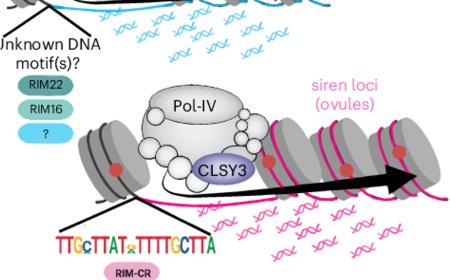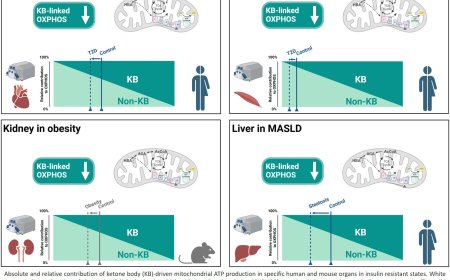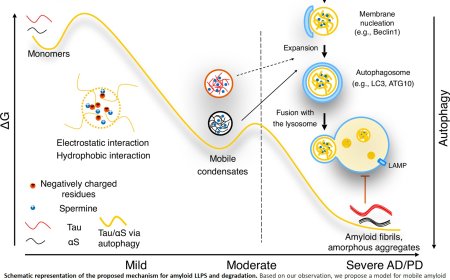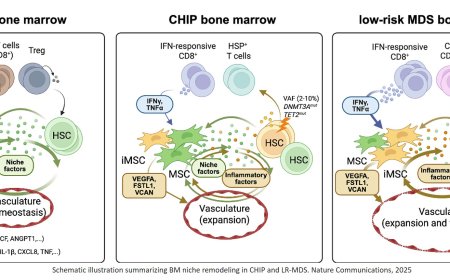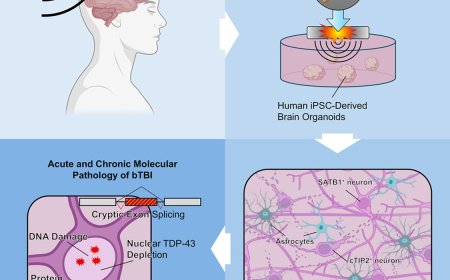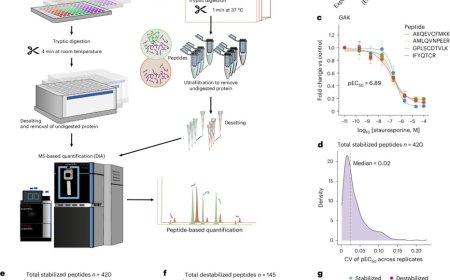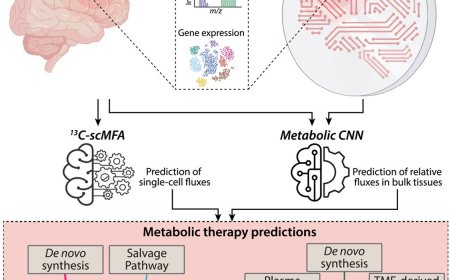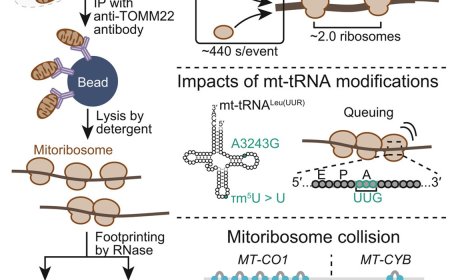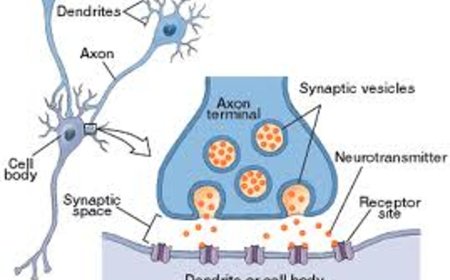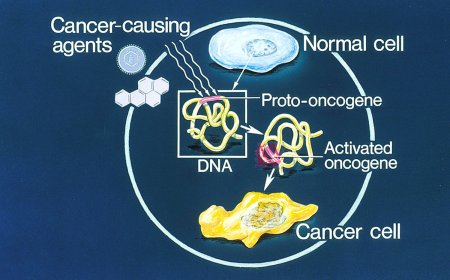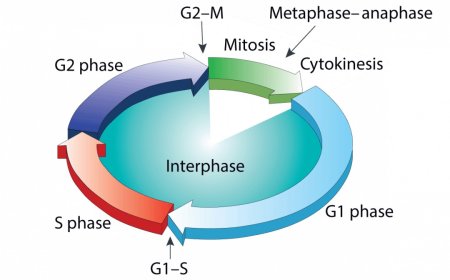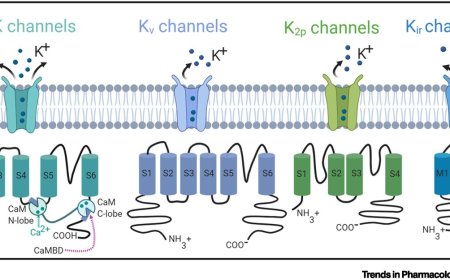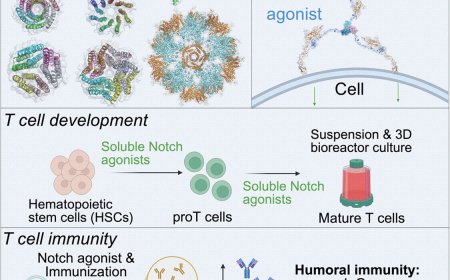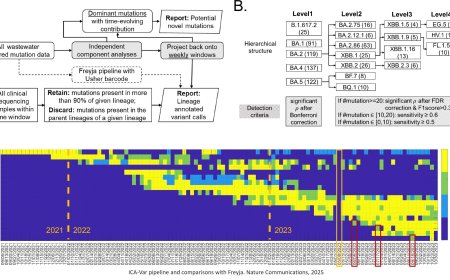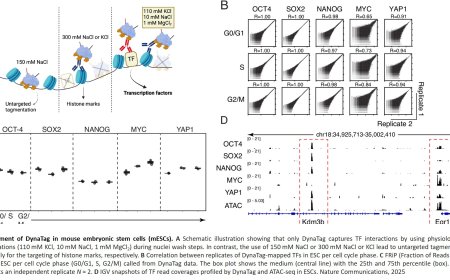Co-translational protein complex assembly
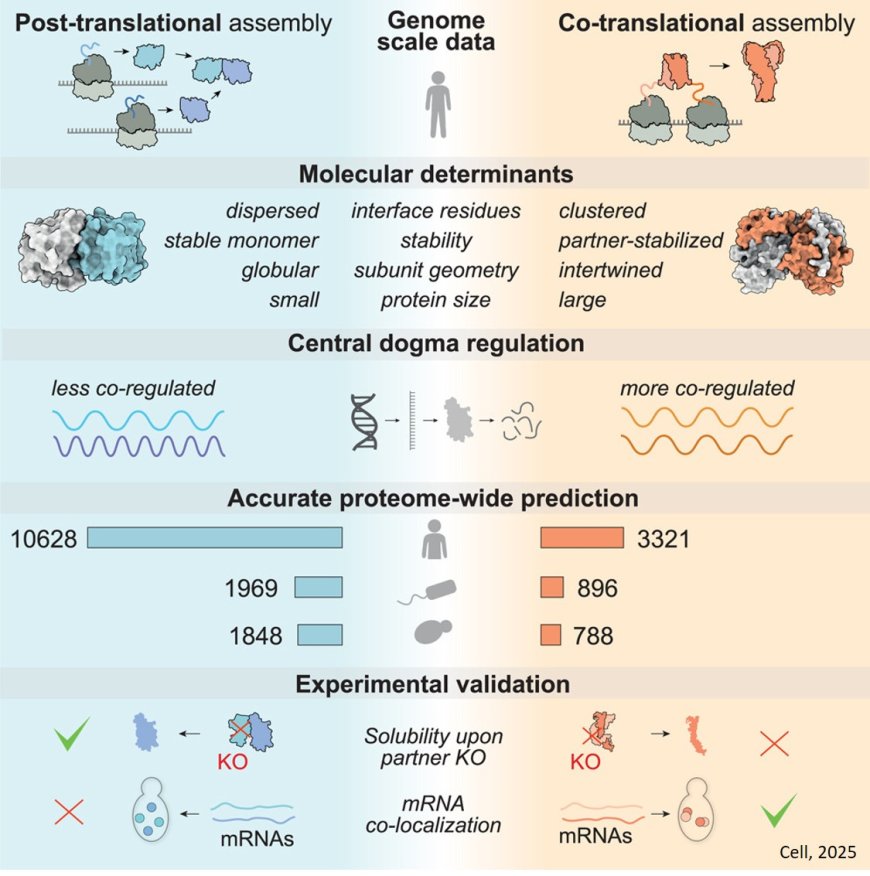
Proteins, the pillars of cellular function, often assemble into “complexes” to fulfill their functions. A study reveals why this assembly often begins during the very process of protein synthesis or ‘‘birth’’. These early interactions involve proteins whose stability depends on their association. They can be compared to a couple in which each partner supports the other. This model paves the way for new strategies to understand and correct assembly errors, which are often associated with pathologies, including neurodegenerative disorders and certain cancers. These findings are published in the journal Cell.
The group focuses on the fundamental principles governing protein self-organization. In other words, these scientists aim to identify the general rules of protein assembly. For this study, the team analyzed a list of proteins involved in co-translational assembly. By comparing their structures to those of proteins that assemble after translation, they were able to establish fundamental differences between these two mechanisms.
“Using this approach, we developed a model based on a large corpus of structural data, using both experimentally determined structures and those predicted by the artificial intelligence software AlphaFold. Our model leveraged structural properties of a complex to predict whether it associated co- or post-translationally,” added the other co-first authors of the study. The scientists notably discovered that binding sites are exposed early in these proteins, enabling them to interact with their partner shortly after emerging from the ribosome.
These predictions were validated using experimental data focused on several proteins. “These findings pave the way for a better understanding of protein assembly within cells and highlight the global impact of protein structure on the regulation of their synthesis,” says the author. Many diseases, including neurodegenerative disorders and certain cancers, are linked to misfolded proteins or defective complexes. By understanding the rules of co-translational assembly, scientists could develop strategies to prevent these errors and design new therapeutic approaches to correct them.
https://www.cell.com/cell/fulltext/S0092-8674(24)01330-8
https://sciencemission.com/co-translational-protein-complex-assembly
